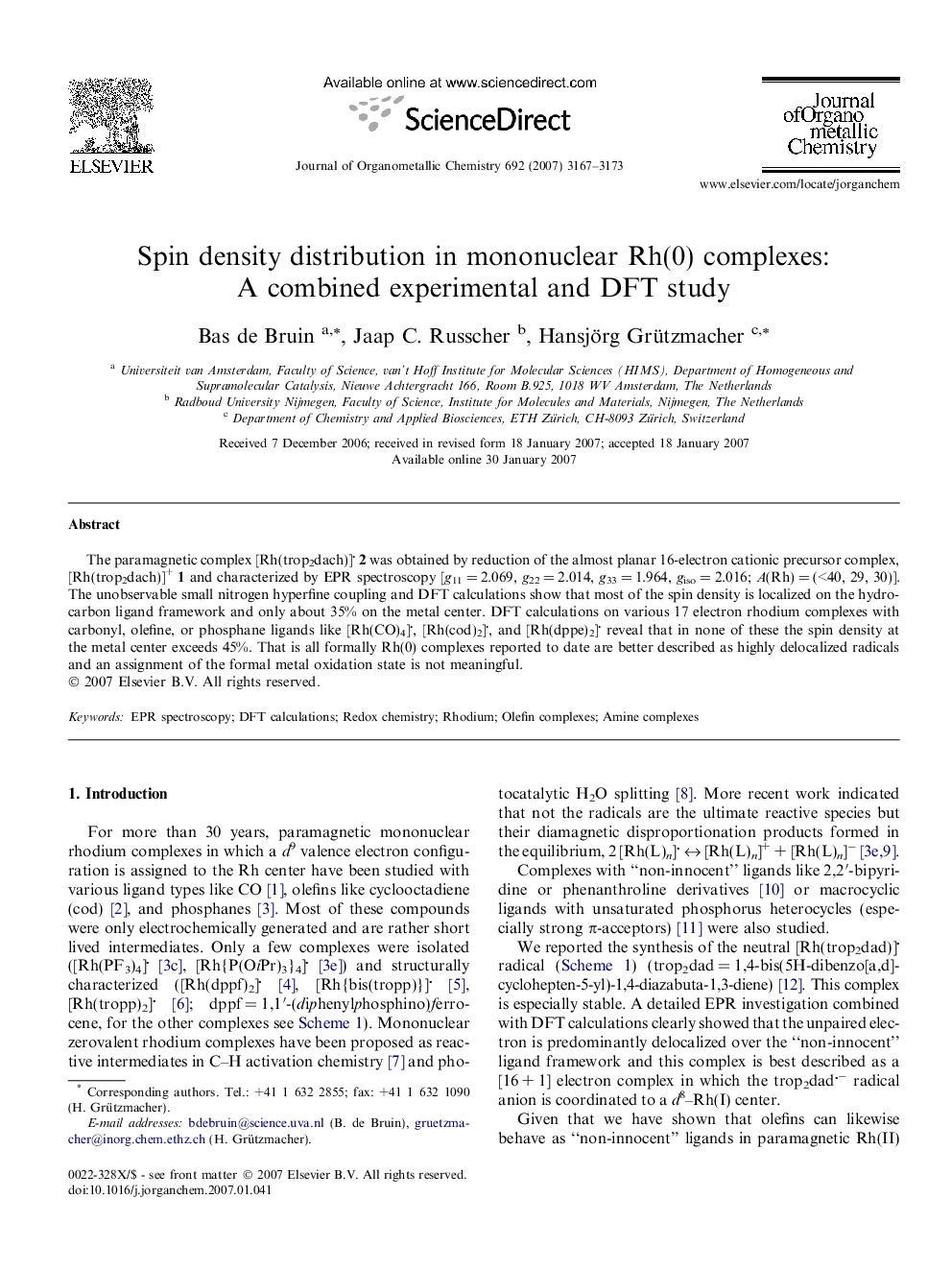| کد مقاله | کد نشریه | سال انتشار | مقاله انگلیسی | نسخه تمام متن |
|---|---|---|---|---|
| 1326742 | 977442 | 2007 | 7 صفحه PDF | دانلود رایگان |

The paramagnetic complex [Rh(trop2dach)]2 was obtained by reduction of the almost planar 16-electron cationic precursor complex, [Rh(trop2dach)]+1 and characterized by EPR spectroscopy [g11 = 2.069, g22 = 2.014, g33 = 1.964, giso = 2.016; A(Rh) = (<40, 29, 30)]. The unobservable small nitrogen hyperfine coupling and DFT calculations show that most of the spin density is localized on the hydrocarbon ligand framework and only about 35% on the metal center. DFT calculations on various 17 electron rhodium complexes with carbonyl, olefine, or phosphane ligands like [Rh(CO)4], [Rh(cod)2], and [Rh(dppe)2] reveal that in none of these the spin density at the metal center exceeds 45%. That is all formally Rh(0) complexes reported to date are better described as highly delocalized radicals and an assignment of the formal metal oxidation state is not meaningful.
Only little spin density is localized on the rhodium center in RhL4 complexes (LCO, phosphane, olefin) and these compounds are not adequately attributed as d9–Rh(0) complexes but best described as highly delocalized metallo radicals.Figure optionsDownload as PowerPoint slide
Journal: Journal of Organometallic Chemistry - Volume 692, Issue 15, 1 July 2007, Pages 3167–3173